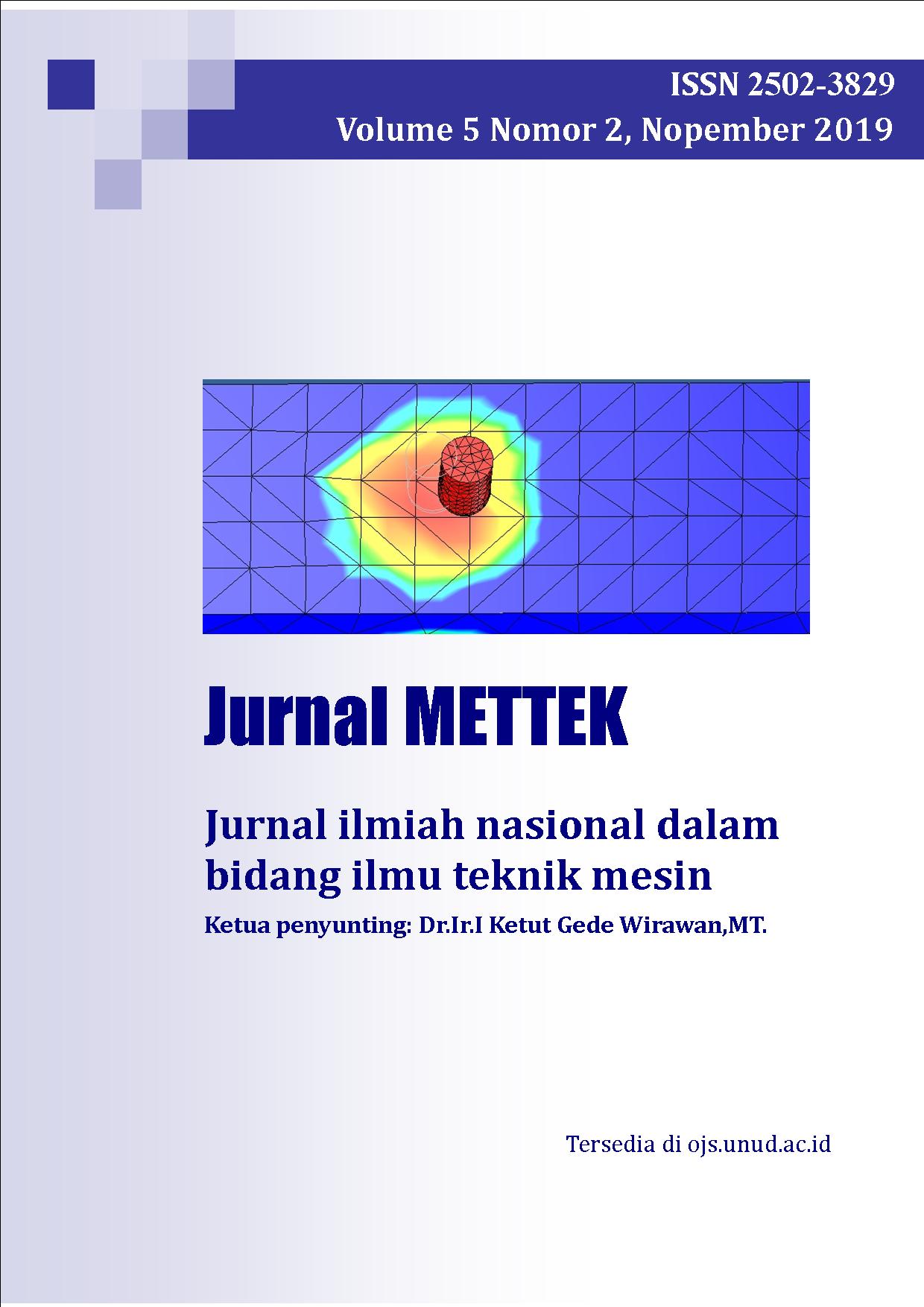Analisis Perpindahan Panas Pada Pipa Kalor Bertingkat
Abstract
Perkembangan teknologi Central Processing Unit (CPU) mengarah menuju smart technologies dengan tujuan untuk mendapatkan kinerja yang lebih baik dengan dimensi yang lebih kecil. Namun, hal tersebut menimbulkan permasalahan berupa tingginya fluks kalor yang bisa membuat prosesor rusak. Sehingga, penelitian ini bertujuan untuk merancang pipa kalor lurus bertingkat yang mampu melakukan pendinginan dengan lebih baik tanpa menggunakan energi listrik. Metode yang digunakan dalam penelitian ini adalah dengan pemberian beban kalor pada heat pipe sebesar 10 W, 20 W, 30 W, dan 40 W. Kemudian dilakukan pengambilan data temperatur dari heat pipe dengan menggunakan NI-DAQ. Lalu, data temperatur tersebut dijadikan dasar dalam perhitungan hambatan termal. Berdasarkan data hasil penelitian dan analisa yang telah dilakukan, didapatkan besarnya hambatan termal pada masing-masing beban kalor secara berurutan adalah 0.97 K/W, 0.69 K/W, 0.65 K/W, dan 0.79 K/W.
Central Processing Unit (CPU) technologies has led into smart technologies with a purpose to get a better performance followed by a smaller dimensions. However, it makes a significant increase in the heat flux which has a potential to break the processor. So in this research, cascade straight heat pipe was designed to get a better cooling performance without electrical energy supplies. The methods used in this research are by giving the heat pipe some heat loads in amount of 10 W, 20 W, 30 W, and 40 W, respectively. And then, the temperature data of the heat pipe was recorded by using NI-DAQ. Finally, the temperature data was used as the main data to calculate the thermal resistance analysis. Based on the result of the research and the analysis that has been done before, thermal resistance for each heat loads has been acquired, they are 0.97 K/W, 0.69 K/W, 0.65 K/W, and 0.79 K/W, respectively.
Downloads

This work is licensed under a Creative Commons Attribution-NonCommercial-ShareAlike 4.0 International License.

This work is licensed under a Creative Commons Attribution-NonCommercial-ShareAlike 4.0 International License.







